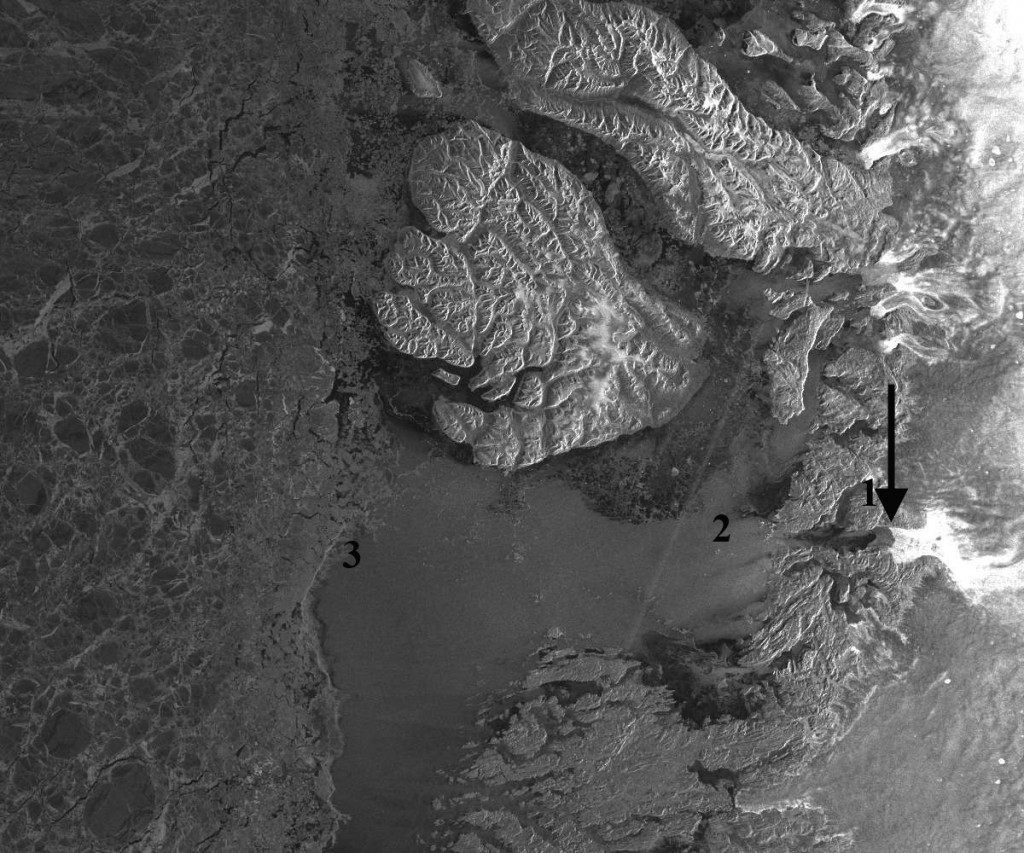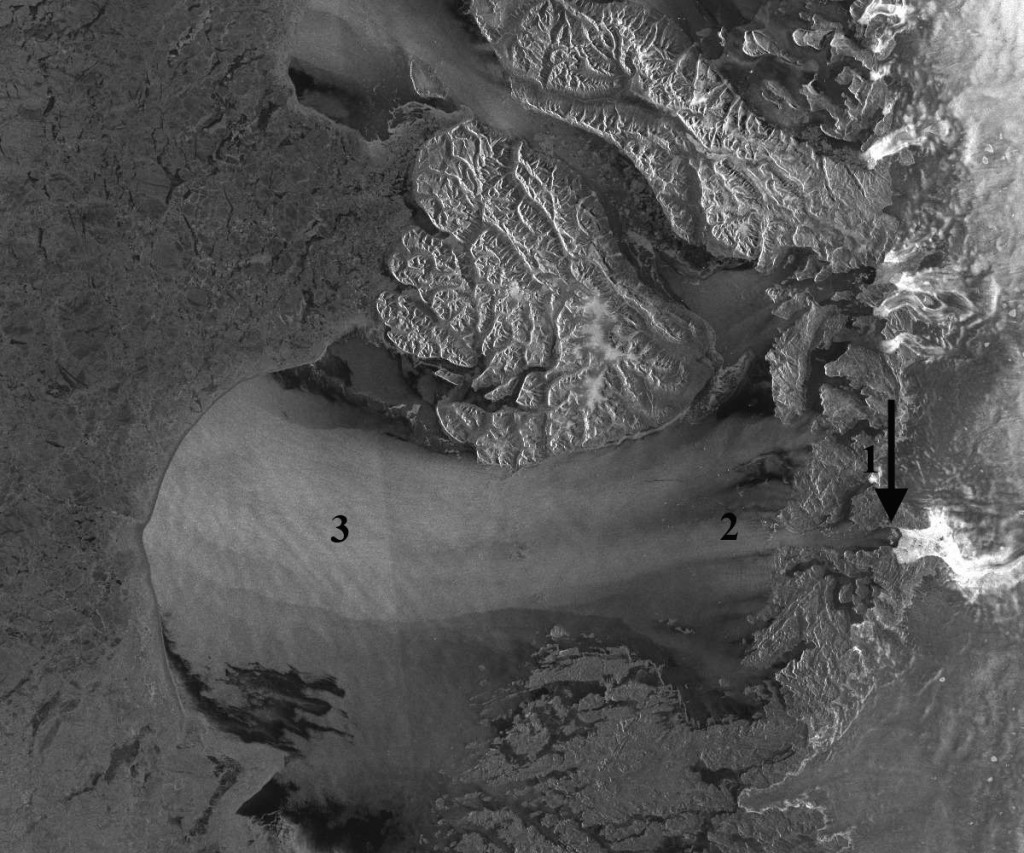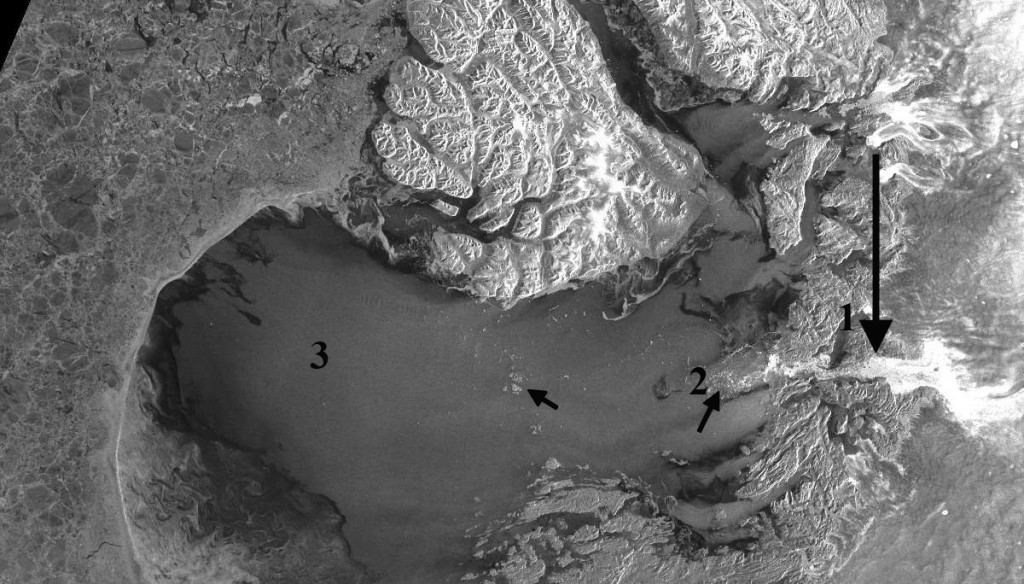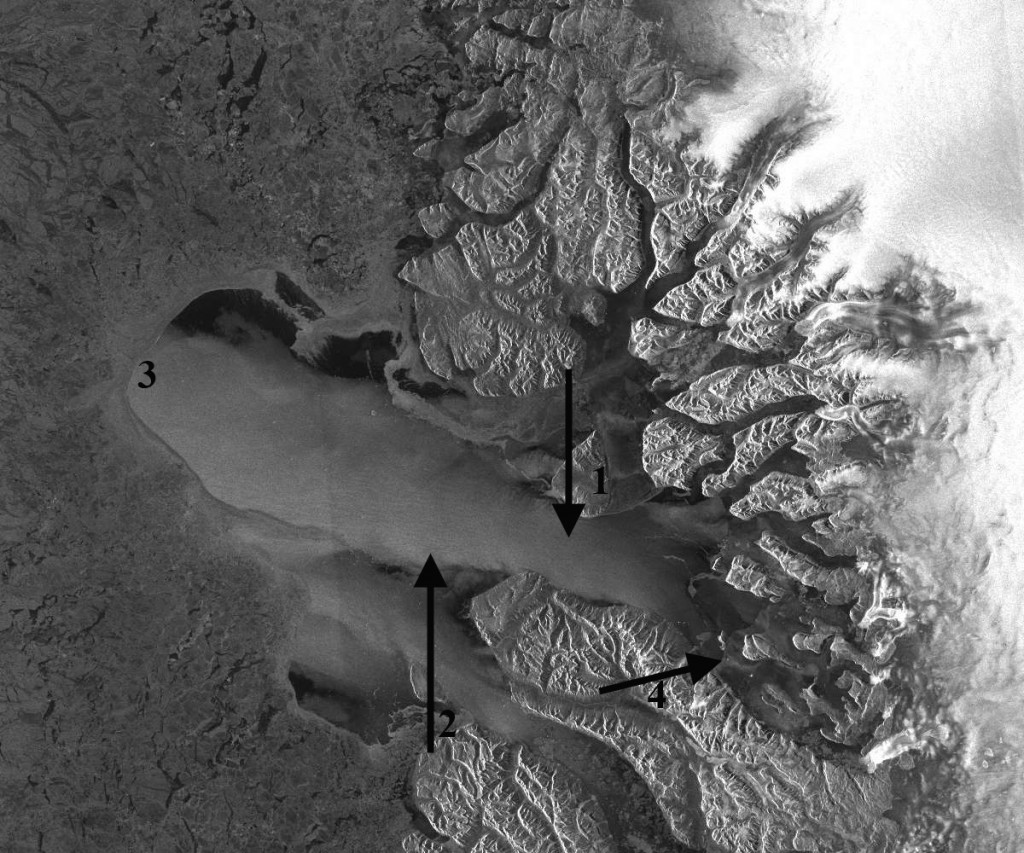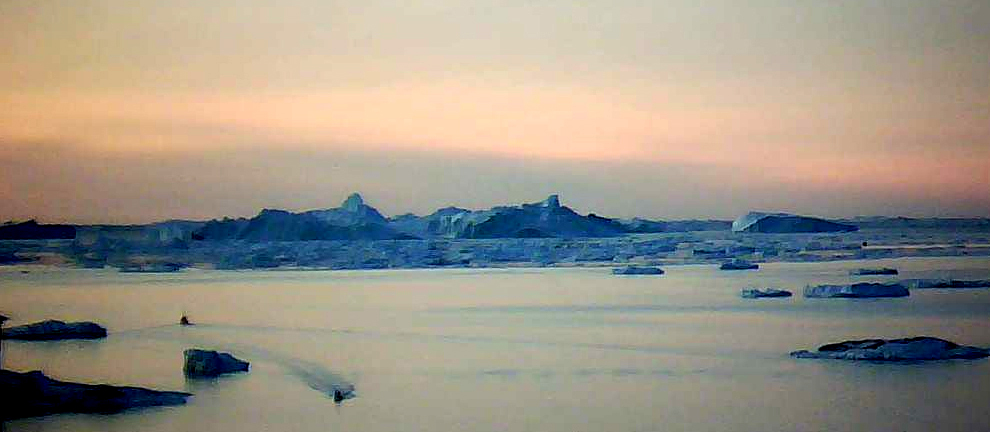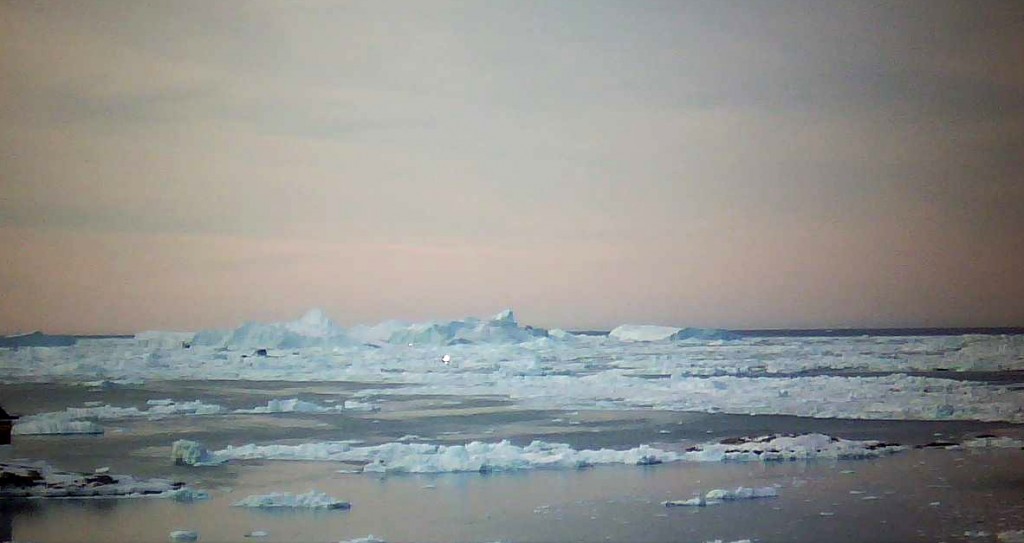On December 8, 2015, Senator Ted Cruz – the chairman of the Senate subcommittee on Space, Science, and Competitiveness – convened a hearing entitled “Data or Dogma?” The stated purpose of this event was to promote “…open inquiry in the debate over the magnitude of human impact on Earth’s climate” (ref. 1). In the course of the hearing, the chairman and several expert witnesses claimed that satellite temperature data falsify both “apocalyptic models” and findings of human effects on climate by “alarmist” scientists. Such accusations are serious but baseless. The hearing was more political theatrics than a deep dive into climate science.
Satellite-derived temperature data were a key item of evidence at the hearing. One of the witnesses [a] for the majority side of the Senate subcommittee showed the changes (over roughly the last 35 years) in satellite- and weather-balloon-based measurements of the temperature of the mid-troposphere (TMT), a layer of the atmosphere extending from the Earth’s surface to roughly 18 km (ref. 2). Satellite TMT measurements are available from late 1978 to present. Observed TMT data were compared with TMT estimates from a large number of model simulations. This comparison was ‘Exhibit A’ for the majority side of the subcommittee.
Senator Cruz used Exhibit A as the underpinning for the following chain of arguments: (1) Satellite TMT data do not show any significant warming over the last 18 years, and are more reliable than temperature measurements at Earth’s surface; (2) The apparent “pause” in tropospheric warming is independently corroborated by weather balloon temperatures; (3) Climate models show pronounced TMT increases over the “pause” period; and (4) The mismatch between modeled and observed tropospheric warming in the early 21st century has only one possible explanation – computer models are a factor of three too sensitive to human-caused changes in greenhouse gases (GHGs). Based on this chain of reasoning, Senator Cruz concluded that satellite data falsify all climate models, that the planet is not warming, and that humans do not impact climate.
This logic is wrong. First, satellites do not provide direct measurements of atmospheric temperature: they are not thermometers in space. The satellite TMT data plotted in Exhibit A were obtained from so-called Microwave Sounding Units (MSUs), which measure the microwave emissions of oxygen molecules from broad atmospheric layers (refs. 2–4)[b]. Converting this information to estimates of temperature trends has substantial uncertainties [c]. The major uncertainties arise because the satellite TMT record is based on measurements made by over 10 different satellites, most of which experience orbital decay (ref. 5) and orbital drift (refs. 6–8) over their lifetimes. These orbital changes affect the measurements of microwave emissions, primarily due to gradual shifts in the time of day at which measurements are made. As the scientific literature clearly documents, the adjustments for such shifts in measurement time are large [d], and involve many subjective decisions (refs. 2–4, 6–8). Further adjustments to the raw data are necessary for drifts in the on-board calibration of the microwave measurements (refs. 9, 10), and for the transition between earlier and more sophisticated versions of the MSUs [e].
In navigating through this large labyrinth of necessary adjustments to the raw data, different plausible adjustment choices lead to a wide range of satellite TMT trends (refs. 2–10). This uncertainty has been extensively studied in the scientific literature, but was completely ignored in the discussion of Exhibit A by Senator Cruz and by witnesses for the majority side of the subcommittee (refs. 2–15). The majority side was also silent on the history of satellite temperature datasets. For example, there was no mention of the fact that one group’s analysis of satellite temperature data – an analysis indicating cooling of the global troposphere – was repeatedly found to be incorrect by other research groups (refs. 2, 3, 5–10).
Such corrective work is ongoing. Satellite estimates of atmospheric temperature change are still a work in progress (refs. 2, 3, 8), and the range of estimates produced by different groups remains large.[f] The same is true of weather balloon atmospheric temperature measurements (refs. 2, 11–13, 15–17)[g].
Surface thermometer records also have well-studied uncertainties (refs. 2, 19, 20), but the estimated surface warming of roughly 0.9 °C since 1880 has been independently confirmed by multiple research groups (refs. 2, 15, 19, 20).
The hearing also failed to do justice to the complex issue of how to interpret differences between observed and model-simulated tropospheric warming over the last 18 years. Senator Cruz offered only one possible interpretation of these differences – the existence of large, fundamental errors in model physics (refs. 2, 21). In addition to this possibility, there are at least three other plausible explanations for the warming rate differences shown in Exhibit A: errors in the human (refs. 22–25), volcanic (refs. 26–30), and solar influences (refs. 24, 31) used as input to the model simulations; errors in the observations (discussed above) (refs. 2–20); and different sequences of internal climate variability in the simulations and observations (refs. 23, 24, 30, 32–36). We refer to these four explanations as “model physics errors,” “model input errors,” “observational errors,” and “different variability sequences.” They are not mutually exclusive. There is hard scientific evidence that all four of these factors are in play (refs. 2–20, 22–36).
“Model input errors” and “different variability sequences” require a little further explanation. Let’s assume that some higher extraterrestrial intelligence provided humanity with two valuable gifts: a perfect climate model, which captured all of the important physics in the real-world climate system, and a perfect observing system, which reliably measured atmospheric temperature changes over the last 18 years. Even with such benign alien intervention, temperature trends in the perfect model and perfect observations would diverge if there were errors in the inputs to the model simulations [h], or if the purely random sequences of internal climate oscillations did not “line up” in the simulations and in reality (refs. 23, 24, 30, 32–36).
In short, “all models are too sensitive to CO2” is not the only valid explanation [i] for the model–data differences in Exhibit A (refs. 2, 11, 13, 18, 22–24, 26, 30, 32–38). Dozens of peer-reviewed scientific studies show that the other three explanations presented here (“model input errors,” “observational errors,” and “different variability sequences”) are the primary reasons for most or all of the warming rate differences in Exhibit A [j].
But what if climate models really were a factor of three or more too sensitive to human-caused GHG increases, as claimed by the majority side of the subcommittee? The telltale signatures of such a serious climate sensitivity error would be evident in many different comparisons with observations, and not just over the last 18 years. We’d expect to see the imprint of this large error in comparisons with observed surface temperature changes over the 20th century (refs. 37–42), and in comparisons with the observed cooling after large volcanic eruptions (refs. 30, 43, 44). We don’t. There are many cases where observed changes are actually larger than the model expectations (refs. 41, 42), not smaller.
In assessing climate change and its causes, examining one individual 18-year period is poor statistical practice, and of limited usefulness. Analysts would not look at the record of stock trading on a particular day to gain reliable insights into long-term structural changes in the Dow Jones index. Looking at behavior over decades – or at the statistics of trading on all individual days – provides far greater diagnostic power. In the same way, climate scientists study changes over decades or longer (refs. 39–42, 45), or examine all possible trends of a particular length (refs. 23, 38, 46–48). Both strategies reduce the impact of large, year-to-year natural climate variability [k] on trend estimates. The message from this body of work? Don’t cherry-pick; look at all the evidence, not just the carefully selected evidence that supports a particular point of view.
In summary, the finding that human activities have had a discernible influence on global climate is not falsified by the supposedly “hard data” in Senator Cruz’s Exhibit A. The satellite data and weather balloon temperatures are not nearly as “hard” as they were portrayed in the hearing. Nor is a very large model error in the climate sensitivity to human-caused GHG increases the only or the most plausible explanation for the warming rate differences in Exhibit A. Indeed, when the observational temperature data sets in Exhibit A are examined over their full record lengths – and not just over the last 18 years – they provide strong, consistent scientific evidence of human effects on climate (refs. 41, 42, 48) – as do many other independent observations of changes in temperature, the hydrological cycle, atmospheric circulation, and the cryosphere (refs. 41, 42).
Climate policy should be formulated on the basis of both the best-available scientific information and the best-possible analysis and interpretation. Sadly, neither was on display at the Senate hearing on “Data or Dogma?” There was no attempt to provide an accurate assessment of uncertainties in satellite data or to give a complete and balanced analysis of the reasons for short-term differences between modeled and observed warming rates. Political theater trumped true “open inquiry.”
Climate change is a serious issue, demanding serious attention from our elected representatives in Washington. The American public deserves no less.
Acknowledgments
We gratefully acknowledge the comments and valuable suggestions from Professor Susan Solomon (M.I.T.) and Dr. Mike MacCracken (The Climate Institute).
Footnotes
- Prof. John Christy from the University of Alabama at Huntsville.
- MSU estimates of the temperature of tropospheric layers also receive a small contribution from the temperature at Earth’s surface.
- This conversion process relies on an atmospheric radiation model to invert the observations of outgoing, temperature-dependent microwave emissions from oxygen molecules. Since oxygen molecules are present at all altitudes, the microwave flux that reaches the satellite is an integral of emissions from thick layers of the atmosphere.
- At the end of the hearing, Senator Cruz questioned the reliability of thermometer measurements of land and ocean surface temperature and highlighted the large adjustments to “raw” surface temperature measurements (adjustments which are necessary because of such factors as changes over time in thermometers and measurement practices). He did not mention that the surface temperature adjustments are typically much smaller than the adjustments to “raw” MSU data (refs. 2, 3, 8).
- This transition occurred in 1998, at the beginning of the 18-year “no significant warming” period highlighted by Senator Cruz.
- For example, over the longer 1979–2014 analysis period, tropospheric warming is a robust feature in all observational TMT datasets. For shorter, noisier periods (such as 1996–2014), the sign of the TMT trend is sensitive to dataset construction uncertainties.
- Disappointingly, Exhibit A neglects to show at least one weather balloon temperature data set with substantial tropospheric warming over the last 18 years (18).
- Such as leaving out volcanic cooling influences that the real world experienced (refs. 23, 24, 26–30).
- The model results shown in Exhibit A are from so-called “historical climate change” simulations. These simulations involve changes in a number of different human and natural influences (e.g., human-caused changes in GHG levels and particulate pollution, and natural changes in solar and volcanic activity). They are not simulations with changes in GHG levels only, so it is incorrect to interpret the model-versus-observed differences in Exhibit A solely in terms of model sensitivity to GHG increases.
- Another incorrect claim made at the hearing was that the mainstream scientific community had failed to show the kind of model–data comparisons presented in Exhibit A. Results similar to those in Exhibit A have been presented in many other peer-reviewed publications (refs. 2, 13, 18, 23, 24, 30, 32, 35, 38, 46, 47).
- Such as the variability associated with unusually large El Niño and La Niña events, which yield unusually warm or cool global-mean temperatures, respectively. The El Niño event during the winter of 1997 and spring of 1998 was likely the largest of the 20th century and produced a large warming “spike” in surface and tropospheric temperatures.
References
- https://www.commerce.senate.gov/public/index.cfm/2015/12/data-or-dogma-promoting-open-inquiry-in-the-debate-over-the-magnitude-of-human-impact-on-earth-s-climate.
- T. R. Karl, S. J. Hassol, C. D. Miller, and W. L. Murray (Eds.): Temperature Trends in the Lower Atmosphere: Steps for Understanding and Reconciling Differences. A Report by the U.S. Climate Change Science Program and the Subcommittee on Global Change Research. National Oceanic and Atmospheric Administration, National Climatic Data Center, Asheville, NC, USA, 164 pp. (2006).
- C. Mears, F. J. Wentz, P. Thorne, and D. Bernie, Assessing uncertainty in estimates of atmospheric temperature changes from MSU and AMSU using a Monte-Carlo technique, J. Geophys. Res., 116, D08112, doi: 10.1029/2010JD014954 (2011).
- J. R. Christy, W. B. Norris, R.W. Spencer, and J. J. Hnilo, Tropospheric temperature change since 1979 from tropical radiosonde and satellite measurements. J. Geophys. Res., 112, D06102, doi: 10.1029/2005JD006881 (2007).
- F. J. Wentz and M. Schabel, 1998: Effects of orbital decay on satellite-derived lower-tropospheric temperature trends. Nature, 394, 661 (1998).
- C. A. Mears and F. W. Wentz, The effect of diurnal correction on satellite-derived lower tropospheric temperature. Science, 309, 1548 (2005).
- C.-Z. Zou et al., Recalibration of microwave sounding unit for climate studies using simultaneous nadir overpasses. J. Geophys. Res., 111, D19114, doi: 10.1029/2005JD006798 (2006).
- S. Po-Chedley, T. J. Thorsen and Q. Fu, Removing diurnal cycle contamination in satellite-derived tropospheric temperatures: Understanding tropical tropospheric trend discrepancies. J. Clim., 28, 2274 (2015).
- C. A. Mears, M. C. Schabel, and F. W. Wentz, A reanalysis of the MSU channel 2 tropospheric temperature record. J. Clim., 16, 3650 (2003).
- S. Po-Chedley and Q. Fu, A bias in the mid-tropospheric channel warm target factor on the NOAA-9 Microwave Sounding Unit. J. Atmos. Oceanic Technol., 29, 646 (2012).
- P. W. Thorne, J. R. Lanzante, T. C. Peterson, and D. J. Seidel, K.P. Shine KP, Tropospheric temperature trends: History of an ongoing controversy. Wiley Inter. Rev., 2, 66 (2011).
- D.J. Seidel, N.P. Gillett, J.R. Lanzante, K.P. Shine, P.W. Thorne, Stratospheric temperature trends: Our evolving understanding. Wiley Inter. Rev., 2, 592 (2011).
- National Research Council: Reconciling observations of global temperature change. National Academy Press, Washington, DC, 85 pp. (2000).
- Q. Fu and C.M. Johanson, Satellite-derived vertical dependence of tropical tropospheric temperature trends. Geophys. Res. Lett., 32, L10703, doi: 10.1029/ 2004GL022266 (2005).
- B. D. Santer, T. M. L. Wigley, and K.E. Taylor, The reproducibility of observational estimates of surface and atmospheric temperature change. Science, 334, 1232 (2011).
- S. C. Sherwood, J. Lanzante, and C. Meyer, Radiosonde daytime biases and late 20th century warming. Science, 309, 1556 (2005).
- P.W. Thorne et al., A quantification of the uncertainties in historical tropical tropospheric temperature trends from radiosondes. J. Geophys. Res., 116, D12116, doi: 10.1029/2010JD 015487 (2011).
- S. C. Sherwood and N. Nishant, Atmospheric changes through 2012 as shown by iteratively homogenized radiosonde temperature and wind data (IUKv2). Env. Res. Lett., 10, doi: 10.1088/1748-9326/10/5/054007 (2015).
- C. P. Morice, J. J. Kennedy, N. A. Rayner, and P. D. Jones, Quantifying uncertainties in global and regional temperature change using an ensemble of observational estimates: The HadCRUT4 data set. J. Geophys. Res., 117, D08101, doi: 10.1029/2011 JD017187 (2012).
- T. R. Karl et al., Possible artifacts of data biases in the recent global surface warming hiatus. Science, 348, 1469 (2015).
- K. E. Trenberth and J. T. Fasullo, Simulation of present-day and twenty-first-century energy budgets of the Southern Oceans. J. Clim., 23, 440 (2010).
- S. Solomon, P. J. Young, and B. Hassler, Uncertainties in the evolution of stratospheric ozone and implications for recent temperature changes in the tropical lower stratosphere. Geophys. Res. Lett., 39, L17706, doi: 10.1029/2012GL052723 (2012).
- J. C. Fyfe, N. P. Gillett, and F. W. Zwiers, Overestimated global warming over the past 20 years. Nature Climate Change, 3, 767 (2013).
- G. A. Schmidt, D. T. Shindell, and K. Tsigaridis, Reconciling warming trends. Nature Geoscience, 7, 158 (2014).
- D. T. Shindell et al., Radiative forcing in the ACCMIP historical and future climate simulations. Atmos. Chem. Phys., 13, 2939 (2014).
- S. Solomon et al., The persistently variable “background” stratospheric aerosol layer and global climate change. Science, 333, 866 (2011).
- J.-P. Vernier,et al., Major influence of tropical volcanic eruptions on the stratospheric aerosol layer during the last decade. Geophys. Res. Lett., 38, L12807, doi: 10.1029/2011 GL047563.
- J. C. Fyfe, K. von Salzen, J. N. S. Cole, N. P. Gillett, and J.-P. Vernier, Surface response to stratospheric aerosol changes in a coupled atmosphere-ocean model. Geophys. Res. Lett., 40, 584 (2013).
- R. R. Neely, III, et al., Recent anthropogenic increases in SO2 from Asia have minimal impact on stratospheric aerosol. Geophys. Res. Lett., 40, 999 (2013).
- B. D. Santer et al., Volcanic contribution to decadal changes in tropospheric temperature. Nature Geoscience, 7, 185 (2014).
- G. Kopp and J. L. Lean, A new, lower value of total solar irradiance: Evidence and climate significance. Geophys. Res. Lett., 38, L01706, doi: 10.1029/2010GL045777 (2011).
- Y. Kosaka and S.-P. Xie, Recent global-warming hiatus tied to equatorial Pacific surface cooling. Nature, 501, 403 (2013).
- G. A. Meehl et al., Externally forced and internally generated decadal climate variability associated with the Interdecadal Pacific Oscillation. J. Clim., 26, 7298 (2013).
- M. H. England et al., Slowdown of surface greenhouse warming due to recent Pacific trade wind acceleration. Nature Climate Change, 4, 222 (2014).
- B. A. Steinman, M. E. Mann, and S. K. Miller, Atlantic and Pacific multidecadal oscillations and Northern Hemisphere temperatures. Science, 347, 988 (2015).
- K. E. Trenberth, Has there been a hiatus? Science, 349, 791 (2015).
- M. Huber and M., R. Knutti, Natural variability, radiative forcing and climate response in the recent hiatus reconciled. Nature Geoscience, 7, 651 (2014).
- J. Marotzkeand P. M. Forster, Forcing, feedback and internal variability in global temperature trends. Nature, 517, 565 (2015).
- G. C. Hegerl et al., Detecting greenhouse-gas-induced climate change with an optimal fingerprint method. J. Clim., 9, 2281 (1996).
- P. A. Stott et al., External control of 20th century temperature by natural and anthropogenic forcings. Science, 290, 2133 (2000).
- G. C. Hegerl, F. W. Zwiers, P. Braconnot, N. P. Gillett, Y. Luo, J. A. Marengo Orsini, J. E. Penner and P.A. Stott, Understanding and Attributing Climate Change. In: Climate Change 2007: The Physical Science Basis. Contribution of Working Group I to the Fourth Assessment Report of the Intergovernmental Panel on Climate Change [Solomon, S., D. Qin, M. Manning, Z. Chen, M. Marquis, K.B. Averyt, M. Tignor, and H.L. Miller (Eds.)]. Cambridge University Press, Cambridge, UK, and New York, NY, USA, pp. 663-745 (2007).
- N. L. Bindoff, P. A. Stott, K. M. AchutaRao, M. R. Allen, N. Gillett, D. Gutzler, K. Hansingo, G. Hegerl, Y. Hu, S. Jain, I. I. Mokhov, J. Overland, J. Perlwitz, R. Sebbari, and X. Zhang, Detection and Attribution of Climate Change: from Global to Regional. In: Climate Change 2013: The Physical Science Basis. Contribution of Working Group I to the Fifth Assessment Report of the Intergovernmental Panel on Climate Change [Stocker, T.F ., D. Qin, G.-K. Plattner, M. Tignor, S. K. Allen, J. Boschung, A. Nauels, Y. Xia, V. Bex and P. M. Midgley (Eds.)]. Cambridge University Press, Cambridge, UK, and New York, NY, USA (2013).
- T. M. L. Wigley, C. M. Ammann, B. D. Santer, and S. C. B. Raper, The effect of climate sensitivity on the response to volcanic forcing. J. Geophys. Res., 110, D09107, doi: 10.1029/2004/JD 005557 (2005).
- J. C. Fyfe, N. P. Gillett, and D. W. J. Thompson, Comparing variability and trends in observed and modeled global-mean surface temperature. Geophys. Res. Lett., 37, L16802, doi: 10.1029/2010GL044255 (2010).
- T. P. Barnett et al., Penetration of human-induced warming into the world’s oceans. Science, 309, 284 (2005).
- B. D. Santer et al., Separating signal and noise in atmospheric temperature changes: The importance of timescale. J. Geophys. Res., 116, D22105, doi: 10.1029/2011JD016263 (2011).
- S. Lewandowsky, J. Risbey, and N. Oreskes, The “pause" in global warming: Turning a routine fluctuation into a problem for science. Bull. Amer. Meteor. Soc., doi: http://dx.doi.org/10.1175/BAMS-D-14-00106.1 (in press).
- B. D. Santer et al., Identifying human influences on atmospheric temperature. Proc. Nat. Acad. Sci., 110, 26 (2013).

